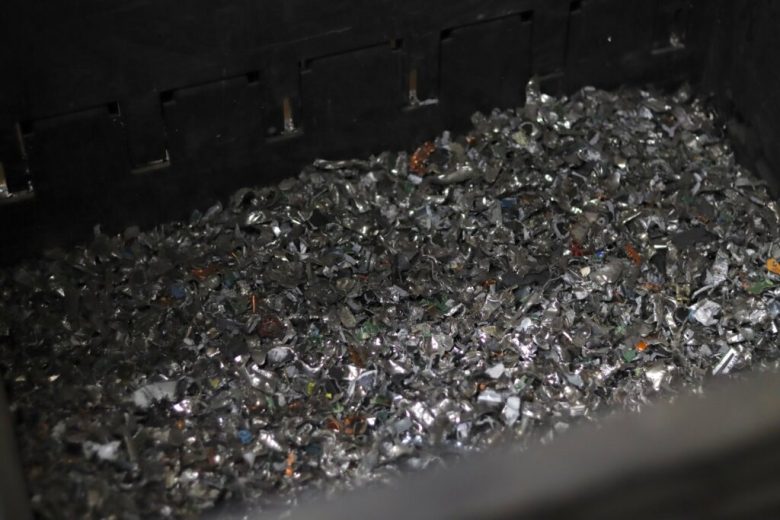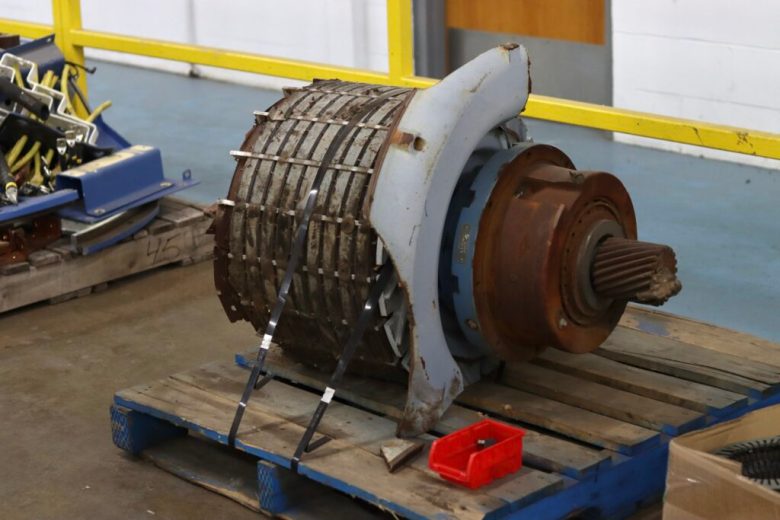This story was originally published by the Iowa Capital Dispatch.
BOONE – Engineers at Critical Materials Recycling break apart circuit boards, old transmissions and decommissioned wind turbines to extract and recycle rare earth materials.
Most recycling facilities extract things like copper and aluminum from the same scraps, but few know how to break down the batteries, meaning those rare earth material components are often lost.
Rare earth materials are a series of elements with properties like conduction or magnetism that make them essential to electronics. They’re also part of the 10%-15% of wind turbine materials that are not currently recycled.
Iowa-based Critical Materials Recycling was selected by the U.S. Department of Energy as one of six companies to receive a $500,000 cash prize and $100,000 in assistance from national laboratories. Twenty projects were selected in the initial phase of the DOE prize and awarded smaller sums, $75,000, to further develop their concepts.
The $5.1 million Wind Turbine Materials Recycling prize was funded by the Bipartisan Infrastructure Law as part of its efforts to achieve a carbon-pollution-free power sector by 2035.
Dan Bina, Critical Materials Recycling president and CEO, said his company was already interested in wind turbine recycling but the DOE funding expedited and prioritized the project.
“The prize will give us the funding to be able to do that initial leg work, and we’ll build a team to make it happen much sooner and probably much better,” Bina said.
The need for better wind turbine recycling
Tyler Christoffel, a technology manager for materials manufacturing and design innovation at the DOE wind energy technologies office, said a big goal of the office is to create a circular economy.
“Basically looking at the ways that we can make our materials more sustainable, be able to reuse them, make them go further,” Christoffel said.
He said about 90% of the turbines, mostly the parts made of steel and concrete, have an established recycling process.
“The work in the program was really focusing on those materials that have been hard to recycle so far, developing technologies so that you can more cost effectively recycle them and then get them into secondary markets,” Christoffel said.
Those materials include the fiber reinforced composites that make up the blades, housing components and the rare earth materials found in the turbine generators.
Christoffel said increasing recycling infrastructure and technology will help reduce waste at all stages of the turbines, from the production process, to the end of life and updating stages that occur less frequently.
Critical materials recycling is a big focus for the department across various industries, not just wind technology. Most of that research is going on at the Critical Materials Innovation Hub led by Ames National Laboratory, here in Iowa.
Ikenna Nlebedim, a scientist at the hub who worked with Critical Materials Recycling, said rare earth recycling is “a key strategy” for U.S. sustainability, security and technological advancement.
“Recycling rare earth elements is crucial for the United States, particularly in the context of wind generators, electronic waste (e-waste), and electric vehicles,” Nlebedim said. “It helps reduce the environmental damage caused by mining and processing, conserves finite resources, and supports a circular economy by reusing materials.”
Most of these minerals are mined overseas, with a majority coming from China, which spurred of the U.S. to develop better recycling capacity.
How it works
Critical Materials Recycling worked with the Ames National Laboratory to use an acid-free dissolution recycling (ADR) process that has little to no waste, saves more of the metal components and doesn’t expose technicians to dangerous acids.
Nlebedim, who led the research, said the hub invented the process in 2015 and has worked with TdVib, Bina’s other company that produces a very specific type of material used in sonar-like technologies. Bina’s team commercialized the process with its Critical Materials Recycling company.
“ADR is both environmentally friendly and efficient, eliminating the need for pre-heating and reducing pollution, making it a greener alternative to traditional methods,” Nlebedim said in a statement.
The DOE prize went to Critical Materials Recycling to apply the acid-free dissolution process to wind turbines.
The first step in the process is to break apart the various “feedstocks,” — a wind turbine, car part or other electronics brought to the company — into their components.
Computer hard drives, already shredded by the technology companies for security purposes, get tossed in a rock-tumbler like machine with a copper salt that Bina said selectively dissolves the rare earth materials and pulls them out into a solution.
The rest of the hard drive, which has copper, gold and aluminum, can go to a more traditional recycler after CMR has extracted the approximately 2% rare earth materials from the hard drives.
“We insert ourselves into the process, and actually add value, because now there’s more copper,” Bina said.


The process is more or less the same moving up the line to larger, discarded magnets and the “swarf,” which is like magnet sawdust, accumulated from cutting them to size.
Bigger items, like a transmission from a sedan or the generator of a wind turbine, have to be taken apart before they undergo the same process. Some of these magnets can also be recut and used again in various components.

Each type of magnet has a slightly different process, but Bina said they go through a selective leaching process, like the hard drives in the copper salt tumbler, and come out as a rare earth solution.
The solution then goes through a series of tanks where it is precipitated into a solid form and cleaned to a rare earth material that Bina said is “exactly” like what a buyer would find on the open market.
Bina said the water used in the process goes through treatment and filtration and can be used again.
“We’re not using any strong acids throughout the entire process, we don’t produce any hazardous waste, and we almost have no waste whatsoever,” Bina said.
An acid process would break down everything but rare earth materials, which are typically such a small portion of the electronic that it rarely makes financial sense to do. Critical Materials Recycling pulls the copper and aluminum to sell to smelters, to make up for the cost of gathering the rare earth materials.
“In order to get the rare earth from something like this, you have to valorize everything,” Bina said.

Moving forward
Soon, as part of the second phase of the DOE prize, Bina said his team will process several of the big, 4-megawatt or larger, turbines.
“Not just looking to see if we can do it, but actually doing it,” Bina said.
He said part of the challenge is building a team and the partnerships to operate. He doesn’t have a contract in place but has been in conversation with big energy and wind companies in Iowa to work into their decommissioning plans.

A spokesperson with MidAmerican Energy said the company was aware of Critical Materials Recycling and wrote a letter of support for its project with DOE.
“We look forward to seeing how the company develops and we embrace the potential for additional recycling and disposal options,” the statement read. “The more options, the better.”
Some of the other recipients of the DOE prize are developing processes for recycling wind turbine blades, which had proven to be rather difficult, as more than one company has run into problems processing the blades quickly enough.
MidAmerican has partnered, in the past, with a company that was later sued by the state for leaving piles of wind turbine blades, destined for recycling, around the state. MidAmerican has since partnered with another facility in Fairfax for recycling the blades.
Bina hopes wind turbines become a large part of his business, which he has plans to expand into a larger space soon. But, since wind turbines are typically decommissioned en masse at intervals of 10 or 20 years, the other items, like hard drives and swarf will be constant inputs for the plant.
“We have seen numerous pieces of these feedstocks just getting thrown away, in our eyes, the rare earth anyways, because there just isn’t that technology, that industry in place to capture them,” Bina said. “
The team in Boone is at the beginning of the growing industry.
“Rare earth recycling, five years or so ago, was unheard of,” Bina said.
Christoffel said the development of a circular economy of these expensive materials will help the U.S. to more sustainably build out expanded wind and solar infrastructure.
“It’ll provide some insulation to our supply and help us to ensure a more sustainable build out of clean energy domestically,” Christoffel said.








![Tesla reviewer breaks down the price of owning an EV versus a gas car in the US: 'Real costs after one year [of] ownership'](https://energynews.today/wp-content/uploads/2023/06/yahoo_news_en-US_s_f_p_168x21_news-90x21.png)






